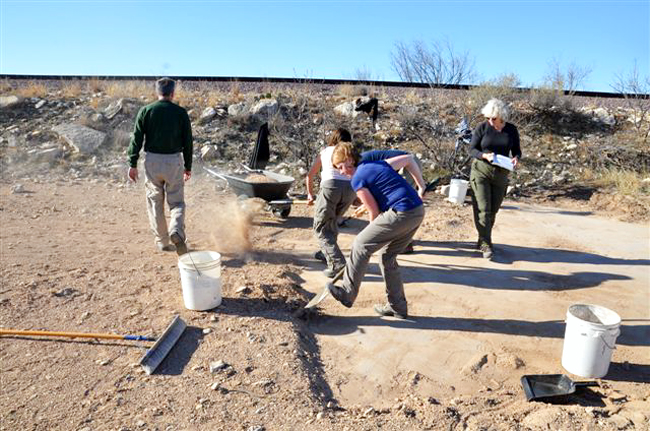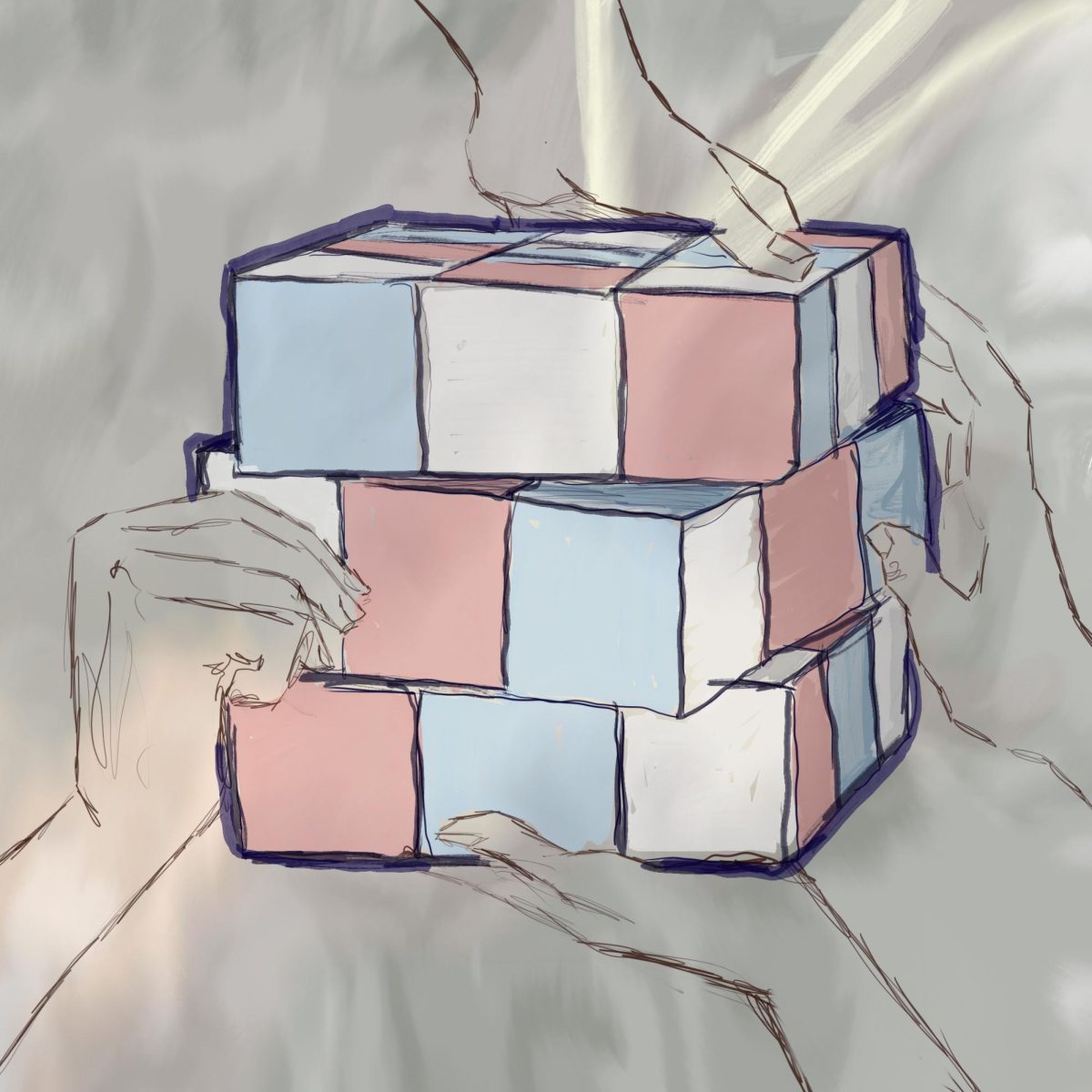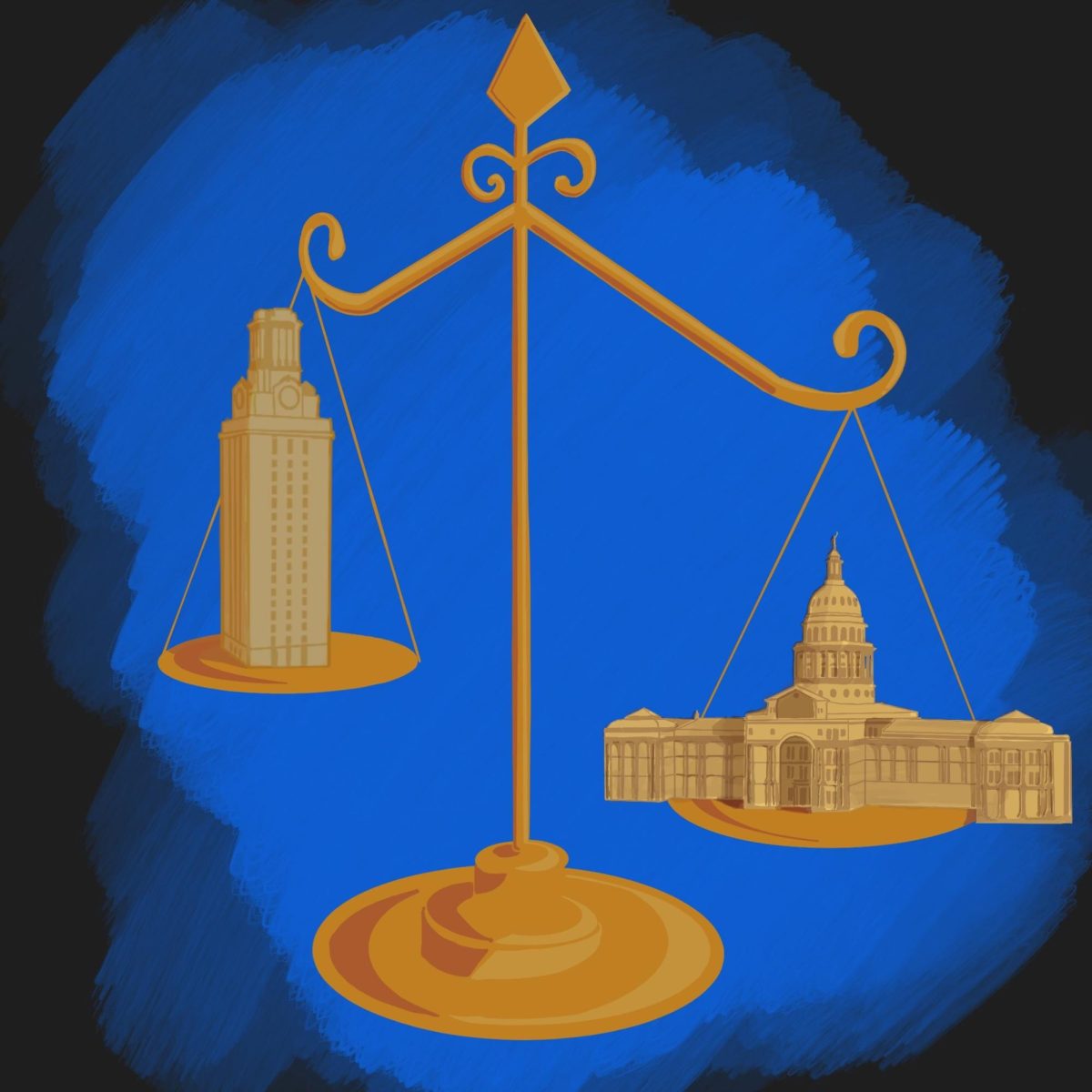As the number of development projects on University Lands increases, further inspections of the land are needed. In turn, archeologists are expanding their knowledge of West Texas — and finding hundreds of Native American artifacts along the way.
In the last year and a half, more than 500 sites have been found, examined and documented, according to Solveig Turpin, a UT alumna who owns Turpin and Sons Inc., an archeological surveying company that regularly inspects sites for University Lands. The sites can range from an area of a few ancient hand tools to engraved drawings known as petroglyphs.
“With the petroglyph it’s always interesting and exciting to see something like that and try to understand what they were doing,” Turpin said. “[The petroglyph] isn’t an isolated phenomenon. The more sites we get, the more we can see a pattern.”
Jonathan Jarvis, UT Texas Archeological Research Laboratory record keeper, said cultural research, including archeological investigations, must be conducted when development projects are approved to use public land, or can be publicly funded or require a federal or state permit. The investigations help guide oil and gas explorations if development could harm a significant site.
Turpin, who has worked with University Lands for three decades, said once an area is declared an archeological site, any plans for that area have to be altered to avoid damaging the site. Turpin said University Lands has also sponsored archeological projects.
“We excavated a bison kill site in a lake bed that was 18,000 years old because a pipeline was coming that way,” Turpin said. “When we find [sites] we plot them on a map and the University knows where they are, so when these projects come in they can tell if anything is in the way.”
Turpin said finding these sites also allows them to be protected. Once they are recorded in state records, the state antiquity committee can designate sites as archeological landmarks, which offers stricter legal protection against removal of artifacts or vandalism. The Native American Grave Protection and Repatriation Act also helps deter damage to the sites with penalties for looters.
“We excavated a cave because relic hunters had excavated a mummified child,” Turpin said. “We excavated the site after because they were obviously intent on taking the human remains. But nobody can watch that much land.”
Jarvis said the findings from these sites have created a collection of documented sites to survey and information for archeologists and graduate students to study.
“The archives that we have with sites can actually be analyzed to predict if there may be other sites near by, in advance of a project” Jarvis said.
Anthropology sophomore Kelsey White said the findings with recorded locations will aid future analyists with information of the site locations and proximity to other sites.
“It’s really important to be able to examine this kind of information because there is context,” White said. “Texas is a really important state because it’s so large; there have been many different groups through the years. We know where the artifacts are coming from and often times in archaeology there isn’t a context of where artifacts are found.”
Turpin said as the University continues using lands for various projects, more sites will be discovered and the information about the people who once used the land will grow. Turpin said hopefully someday, with enough information, archeologists will be able to piece together how these
people lived.




















